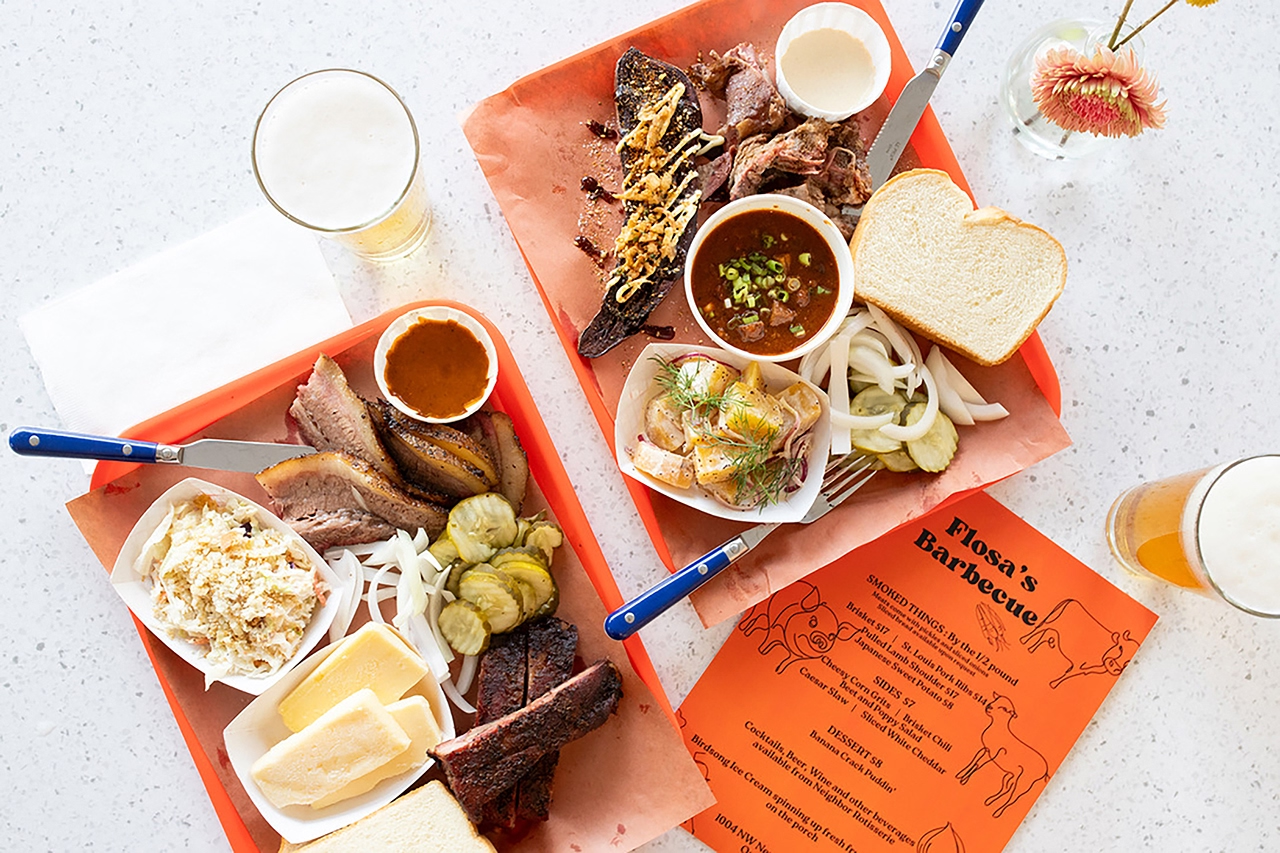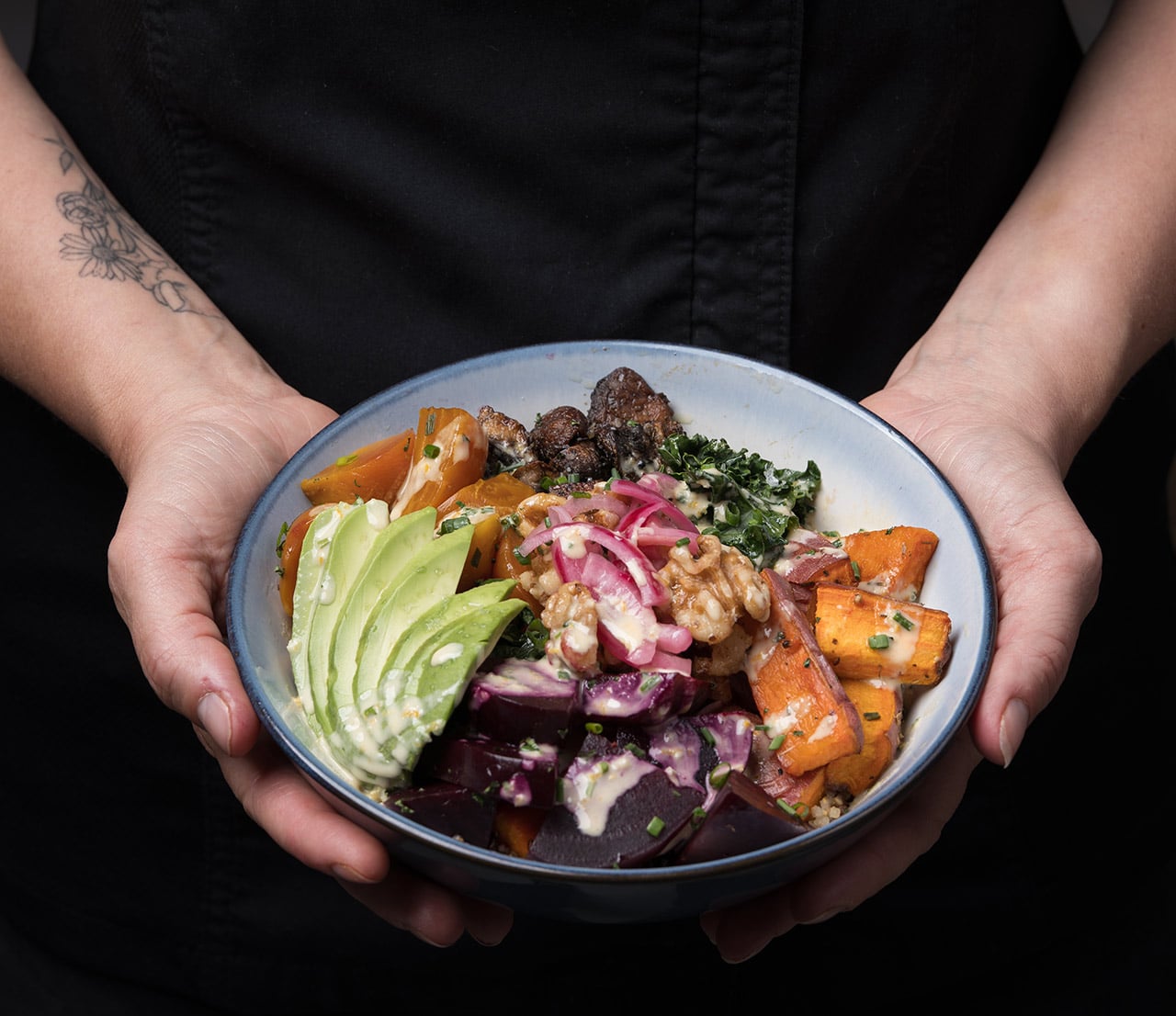It was September 2014 when a UPS truck arrived at Sunriver Brewing Company with 200 pounds of fresh Mosaic hops from the Yakima Valley in Washington. The shipment took Brett Thomas, then one of Sunriver’s two brewers, by surprise; he’d been expecting the hops, but not for at least another day or two. Thomas wasn’t sure whether the delivery was due to a miscommunication, missed phone call, or lost voicemail—but when the shipment arrived at the brewhouse, he knew he needed to do something with the hops—and fast. Thomas immediately ruled out storing the hops overnight in the brewery’s cooler, lest they wilt and degrade. Setting them aside in the humid brewhouse seemed just as fraught. “It’s like, ‘Crap, what do we do?’” Thomas, now Sunriver’s director of brewery operations, recalls thinking. “I had to start making some decisions at that point.”
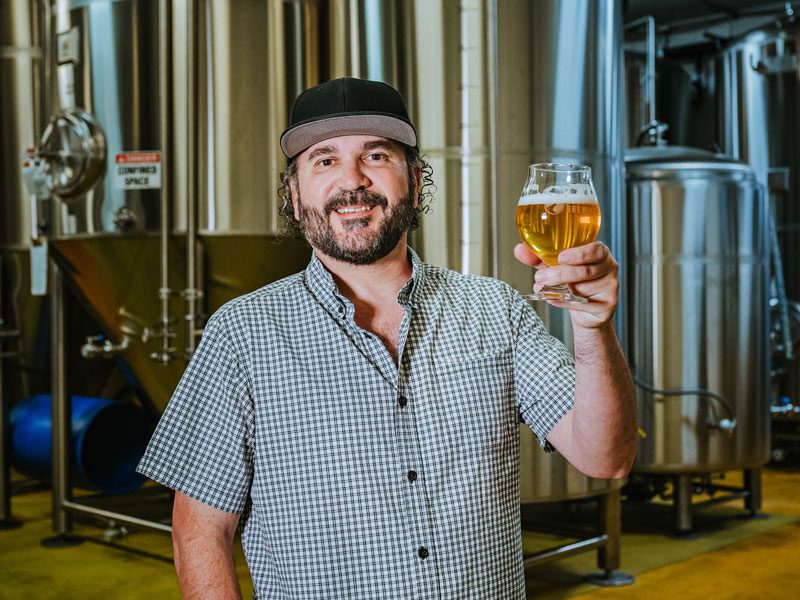
Locked in a race against time, Thomas had his fellow brewer transfer another beer-in-progress to a different tank a day early, freeing it up to make use of the freshly delivered hops. From there, he cleaned the tank, started brewing, tossed in the hops, mainlined cups of coffee and—at age 40—pulled an all-nighter like an overworked college student. Thomas didn’t head home until 10 a.m. the following morning. “That was the longest day of my brewing career,” he said. “It was about a twenty-seven-hour day for me. It was exhausting but invigorating; I was going to make that beer regardless of what it took.”
The race to do it, and do it right, was partly because Thomas wasn’t just brewing any ordinary beer; he was brewing a fresh-hop beer—a style which, in recent years, has become the heartbeat of regional festivals, a mainstay at bars and breweries alike, and one of the most fun, if challenging, styles for brewers to craft. So as summer turns to fall in Central Oregon, here’s what the fuss is about—and why anyone would work all night to make such a beer—along with background on the phenomenon and how to enjoy the once-a-year fun that is fresh-hop season.
Fresh-Hop Beers, Explained
Most of the beers you’ve ever enjoyed—from Natural Lights in college-town dive bars to high-end sour ales and hazy IPAs from Central Oregon’s best breweries—have used dried hops as one of their main ingredients. The plant, with a cone-shaped flower, acts as a preservative that keeps beer fresh longer—and gives beer its aromas and flavors. So, if you’ve ever enjoyed a vanilla-tinged porter or picked out the pineapple flavor in your favorite IPA, you have the humble hop plant to thank.
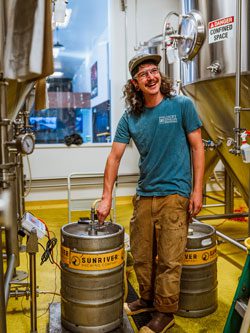
These hops, actually a cousin of the cannabis plant, are generally picked and processed on farms, turned into small pellets (resembling rabbit food), placed into vacuum-sealed bags and stored for weeks or months in refrigerators. Hop farms can be found all over the United States, but the vast majority are in Washington, Idaho and Oregon—where hops have grown in the Willamette Valley for more than 150 years.
But when hops for fresh-hop beers are picked between mid-August and mid-September, they aren’t pelletized and stored for later use. Rather, the freshly picked hops are cleaned and immediately sent to craft breweries for inclusion in a brewing batch over the following 24 hours or so—a tight timeframe that ensures the hops retain their freshness and distinct flavor profiles before degrading over the following days.
The resulting beers boast intense flavors and stark aromas made possible by the specific hop variety used in that beer; maybe it’s a juiciness that lingers on the palate, hard-hitting notes of citrus or pine, or lasting resinous flavors that stand out. “The essence of the hop ends up in the beer,” explained Wade Underwood, co-founder and general manager of Three Creeks Brewing in Sisters. “They’re really unique in that we can only make them a few days each year when they’re physically harvested, and they make incredible beers with more delicate notes than most bigger IPAs.”
The beers generally start showing up around Oregon in early September, a few weeks after their hops are picked from the bine (not vine!), and can remain relevant well into October. And while IPAs and pale ales account for most fresh-hop beer styles, several breweries routinely churn out fresh-hop lagers, most commonly Oktoberfest-style beers, as the season unfolds.

Fresh-Hop Fever
The first fresh-hop beers showed up in the Pacific Northwest in the early 2000s and have been growing in popularity over the past decade. Early on, brewers saw it as a fun and pressure-packed challenge, along with a way to show off the fresh flavors of the hop. Our region’s collective love of hoppy IPAs made it easy for those brewers to find a receptive audience, and fresh-hop beers have become seasonal mainstays ever since.
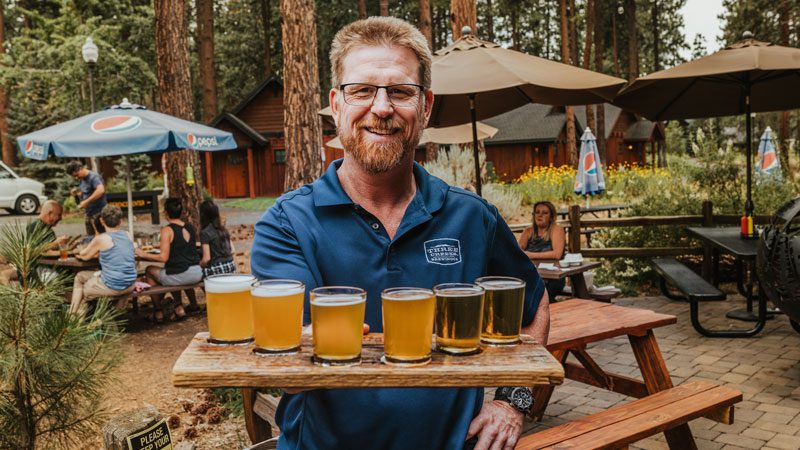
Today, fresh-hop beers are ubiquitous at breweries, taprooms, and festivals around the Pacific Northwest. Thomas says Sunriver expects to brew seven or eight fresh-hop beers in 2021, for instance, and Bend’s Deschutes Brewery routinely churns out upwards of a dozen or more fresh-hop beers each year. But just why are fresh-hop beers the most sought-after seasonal release each fall?
Central Oregon hop growers and brewers alike teased out a few common themes in trying to explain the allure of the beers. First, there is the one-and-done nature of fresh-hop season, which is matched by the style’s short shelf life. These beers begin to lose their pungent, fresh flavors soon after getting brewed. Most beers rely on ingredients that aren’t nearly as fresh, but fresh-hop beers degrade a lot quicker once they get brewed and into kegs/cans. All of this, along with regional IPA-lust, increases the urgency to sample these unique ales and lagers.

But for many, the appeal gets beyond those explanations—and into what they say about our region’s roots in agriculture. “As an agricultural product, hops are so ingrained into Oregon’s culture,” Thomas said. “It is something that brewers specifically come to Oregon for. People come to Oregon for craft beer, and a lot of it is the connection to hops and that agricultural component.”
As a brewer, Bridge 99 Brewery owner and managing member Trever Hawman enjoys the season for the rare opportunities it provides—and the self-imposed pressure to get a beer right. After all, most brewers must wait a whole year for a second chance if their first fresh-hop beer misses the mark. “You’re using a whole bunch more hops than usual, and then you’re like, ‘I hope this works, that’s a lot of hops going in there,’” Hawman said. “That makes it a little more scary and a little more sketchy, but it’s super gratifying when it comes out, and it’s good.”
Fresh-Hop Close to Home
The Willamette Valley may produce the vast majority of Oregon’s hops each year, but Central Oregon is no stranger to fresh-hop season. At least one local farm produces hops for a Bend-based brewery, and several breweries throughout the region have put their own stamp on the style in recent years.
Tumalo Hops Company, for instance, was launched in 2006 and has been growing four varieties of hops just outside the community of Tumalo ever since. Husband-and-wife team Gary and Sue Wyatt run the small farm and process each year’s yield for local homebrewers, along with the Bend-based Bridge 99 Brewery.
For several years, the Wyatts have supplied Hawman with 100 pounds of hops for Bridge 99’s annual fresh-hop beer. Whenever the hops reach peak ripeness each September, after four to five months of steady growth, the Wyatts generally wake up around 4 a.m. to pick fifty bines and bring them into their shed for processing; by 8 a.m., the duo generally has 100 pounds of fresh hops sorted and ready for Hawman.

Meanwhile, Hawman and his crew start their fresh-hop brew day as early as 7 or 8 a.m. so they can be ready when the Wyatts arrive with the hops roughly three hours later. Most years, Gary Wyatt said the hops are poured into Hawman’s tanks just twenty minutes after they leave his farm. In a state beloved for its farm-to-table ethos, it doesn’t get much fresher.
Farther west, Underwood and his team at Three Creeks Brewing have earned acclaim in recent years for their annual Conelick’r Fresh Hop IPA. The beer earned a bronze medal for fresh-hop pale ales and IPAs at the 2021 Oregon Beer Awards—as well as a gold medal for fresh-hop beers at the 2020 Great American Beer Festival (the country’s largest beer festival). Fans will be able to pick up four-packs of the beer beginning in mid-September—and can likely try it at the tenth annual Sisters Fresh Hop Festival, returning on September 25, 2021, after a COVID-19-induced hiatus in 2020.
As for Thomas and that beer he stayed up all night to brew in 2014? That became D’Kine, Sunriver Brewing’s original fresh-hop IPA and, today, one of its best-loved releases every fall. The beer uses Mosaic hops from Coleman Agriculture in the Willamette Valley, giving it flavors of mango, blueberry, citrus and pine. Nearly a decade later, D’Kine remains a signature beer that invigorates Thomas each year—especially now that he’s not working overnight to make it happen. “Fresh-hop beers are a labor of love,” he said. “The entire process, from the guys picking the hops all the way to the brewers pulling the hops out of the [container], it’s a very labor-intensive style of brewing—but we wouldn’t have it any other way.”
With fresh-hop season upon us, the sheer volume of beers can feel overwhelming—so here’s what to know about the style, what to watch for and how to enjoy the beers all season long.
Your Guide to Fresh-Hop Season in Central Oregon
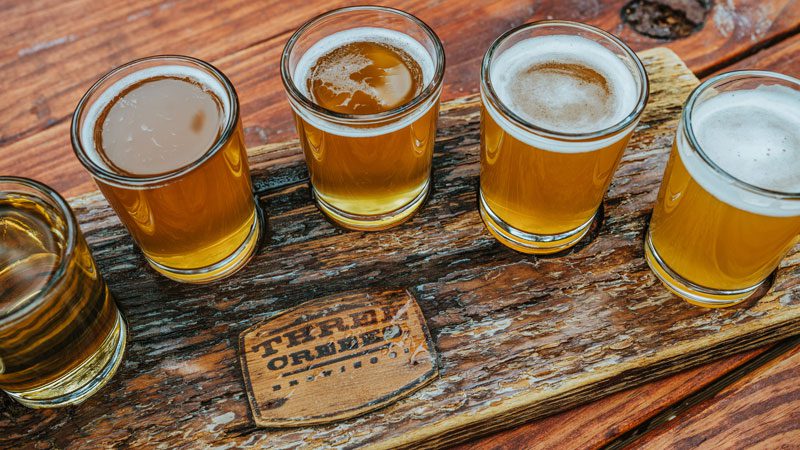
The Season Itself
The region’s first hops are generally harvested in mid-August, and the first fresh-hop beers begin showing up on store shelves, as well as in brewpubs and taprooms, by early September. Different hop varieties are harvested at different times through mid-September, however, so you might see fresh-hop beers on tap around Central Oregon well into October.
Not Just for Hop Heads
Even if you don’t love IPAs, you’ll find plenty to love about fresh-hop season. The bitterness most commonly associated with IPAs tends to get distilled in fresh-hop offerings, with those sharp notes replaced by a wide range of easier-drinking flavors. Brewers have also taken to brewing fresh-hop lagers, as well, that boast milder, more well-rounded flavors.
Where to Enjoy Fresh-Hop Beers
Most Central Oregon breweries either source fresh hops from local farmers or make the marathon trip to the Willamette Valley each fall to source their hops—so you’ll find fresh-hop beers at breweries and taprooms all over the region. For a sample of the season, though, the Sisters Fresh Hop Festival (in late September every year: sistersfreshhopfest.com) brings together roughly twenty-five breweries pouring their own fresh-hop creations.
Click here to read more about our local food and restaurant scene.


